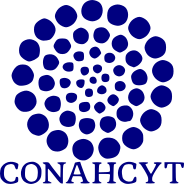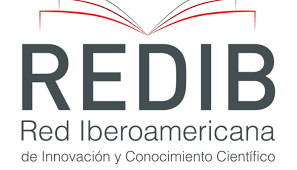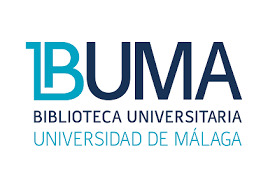Conocimientos moleculares sobre la embriogénesis somática en Agave angustifolia: caracterización del gen AaSERK
DOI:
https://doi.org/10.18387/polibotanica.58.14Palabras clave:
Embriogénesis somática; Gen de quinasa similar al receptor de embriogénesis somática; Agave angustifolia.Resumen
El género Agave, con 204 especies, incluidas 163 nativas de México, es de suma importancia en contextos etnobotánicos, ecológicos y económicos. Sin embargo, la sobreexplotación y la recolección incontrolada de estas plantas ponen en peligro su supervivencia debido a la problemática de su reproducción sexual. En respuesta, se han desarrollado técnicas in vitro, como la embriogénesis somática, para la propagación vegetativa y la conservación de especies. La embriogénesis somática hace que las células manifiesten su carácter totipotente, impulsado por la expresión genética específica, hormonas endógenas y respuestas a reguladores externos. Este trabajo explora los primeros conocimientos moleculares sobre la embriogénesis somática en el género Agave a través del aislamiento y caracterización del gen AaSERK. Las quinasas similares a receptores (RLK) con repeticiones ricas en leucina (LRR) desempeñan funciones cruciales en la señalización celular en diversos aspectos del desarrollo de las plantas, incluida la embriogénesis. La presencia de un motivo Serina-Prolina-Prolina (SPP) distingue a las SERK de otras RLK y su expresión significa la adquisición de la competencia embriogénica. Los resultados revelan que AaSERK codifica una proteína SERK típica con dominios conservados, lo que sugiere su papel en el desarrollo de las plantas. El análisis filogenético muestra que AaSERK comparte ascendencia evolutiva con SERK de especies de plantas estrechamente relacionadas. Estos hallazgos arrojan información importante sobre la embriogénesis somática en Agave angustifolia y pueden mejorar los procesos de regeneración y transformación para la conservación de esta valiosa planta. Comprender el control genético de la totipotencia y la regulación molecular de la embriogénesis somática es vital para avanzar en la biotecnología y la fisiología de las plantas.
Referencias
Baudino, S., Hansen, S., Brettschneider, R., Hecht, V. F. G., Dresselhaus, T., Lörz, H., Dumas, C., & Rogowsky, P. M. (2001). Molecular characterisation of two novel maize LRR receptor-like kinases, which belong to the SERK gene family. Planta, 213(1), 1–10. https://doi.org/10.1007/s004250000471
Becraft, P. W. (1998). Receptor kinases in plant development. Trends in Plant Science, 3(10), 384–388. https://doi.org/10.1016/S1360-1385(98)01301-6
Becraft, P. W. (2002). Receptor Kinase Signaling in Plant Development. Annual Review of Cell and Developmental Biology, 18(1), 163–192. https://doi.org/10.1146/annurev.cellbio.18.012502.083431
Cueva, A., Concia, L., & Cella, R. (2012). Molecular characterization of a Cyrtochilum loxense Somatic Embryogenesis Receptor-like Kinase (SERK) gene expressed during somatic embryogenesis. Plant Cell Reports, 31(6), 1129–1139. https://doi.org/10.1007/s00299-012-1236-x
De Oliveira Santos, M., Romano, E., Yotoko, K. S. C., Tinoco, M. L. P., Dias, B. B. A., & Aragão, F. J. L. (2005). Characterisation of the cacao somatic embryogenesis receptor-like kinase (SERK) gene expressed during somatic embryogenesis. Plant Science, 168(3), 723–729. https://doi.org/10.1016/j.plantsci.2004.10.004
Fisher, K., & Turner, S. (2007). PXY, a Receptor-like Kinase Essential for Maintaining Polarity during Plant Vascular-Tissue Development. Current Biology, 17(12), 1061–1066. https://doi.org/10.1016/j.cub.2007.05.049
Guzzo, F., Baldan, B., Mariani, P., Schiavo, F. Lo, & Terzi, M. (1994). Studies on the origin of totipotent cells in explants of Daucus carota L. Journal of Experimental Botany, 45(10), 1427–1432. https://doi.org/10.1093/jxb/45.10.1427
Hecht, V., Vielle-Calzada, J. P., Hartog, M. V, Schmidt, E. D., Boutilier, K., Grossniklaus, U., & de Vries, S. C. (2001). The Arabidopsis SOMATIC EMBRYOGENESIS RECEPTOR KINASE 1 gene is expressed in developing ovules and embryos and enhances embryogenic competence in culture. Plant Physiology, 127(3), 803–816. http://www.ncbi.nlm.nih.gov/pubmed/11706164
Hu, H., Xiong, L., & Yang, Y. (2005). Rice SERK1 gene positively regulates somatic embryogenesis of cultured cell and host defense response against fungal infection. Planta, 222(1), 107–117. https://doi.org/10.1007/s00425-005-1534-4
Kobe, B., & Deisenhofer, J. (1994). The leucine-rich repeat: a versatile binding motif. Trends in Biochemical Sciences, 19(10), 415–421. https://doi.org/10.1016/0968-0004(94)90090-6
Koehler, A. D., Irsigler, A. S. T., Carneiro, V. T. C., Cabral, G. B., Rodrigues, J. C. M., Gomes, A. C. M. M., Togawa, R. C., Costa, M. M. C., Martinelli, A. P., & Dusi, D. M. D. A. (2020). SERK genes identification and expression analysis during somatic embryogenesis and sporogenesis of sexual and apomictic Brachiaria brizantha (Syn. Urochloa brizantha). Planta, 252(3), 39. https://doi.org/10.1007/s00425-020-03443-w
Liu, Z., Zhao, Y., Zeng, L., Zhang, Y., Wang, Y., & Hua, J. (2018). Characterization of GhSERK2 and its expression associated with somatic embryogenesis and hormones level in Upland cotton. Journal of Integrative Agriculture, 17(3), 517–529. https://doi.org/10.1016/S2095-3119(17)61726-X
Ma, Y., Qin, F., & Tran, L.-S. P. (2012). Contribution of Genomics to Gene Discovery in Plant Abiotic Stress Responses. Molecular Plant, 5(6), 1176–1178. https://doi.org/10.1093/mp/sss085
Maulidiya, A. U. K., Sugiharto, B., Dewanti, P., & Handoyo, T. (2020). Expression of somatic embryogenesis-related genes in sugarcane (Saccharum officinarum L.). Journal of Crop Science and Biotechnology, 23(3), 207–214. https://doi.org/10.1007/s12892-020-00024-x
Monja-Mio, K. M., Olvera-Casanova, D., Herrera-Alamillo, M. Á., Sánchez-Teyer, F. L., & Robert, M. L. (2021). Comparison of conventional and temporary immersion systems on micropropagation (multiplication phase) of Agave angustifolia Haw. ‘Bacanora.’ 3 Biotech, 11(2), 77. https://doi.org/10.1007/s13205-020-02604-8
Murashige, T., & Skoog, F. (1962). A Revised Medium for Rapid Growth and Bio Assays with Tobacco Tissue Cultures. Physiologia Plantarum, 15(3), 473–497. https://doi.org/10.1111/j.1399-3054.1962.tb08052.x
Nodine, M. D., Yadegari, R., & Tax, F. E. (2007). RPK1 and TOAD2 Are Two Receptor-like Kinases Redundantly Required for Arabidopsis Embryonic Pattern Formation. Developmental Cell, 12(6), 943–956. https://doi.org/10.1016/j.devcel.2007.04.003
Porras-Murillo, R., Andrade-Torres, A., & Solís-Ramos, L. Y. (2018). Expression analysis of two SOMATIC EMBRYOGENESIS RECEPTOR KINASE (SERK) genes during in vitro morphogenesis in Spanish cedar (Cedrela odorata L.). 3 Biotech, 8(11). https://doi.org/10.1007/s13205-018-1492-8
Ramasamy, G., Ramasamy, S., Ravi, N. S., Krishnan, R., Subramanian, R., Raman, R., Duraialaguraja, S., Muthurajan, R., & Vellaichamy, J. (2022). Haploid embryogenesis and molecular detection of somatic embryogenesis receptor-like kinase (TcSERK) genes in sliced ovary cultures of cocoa (Theobroma cacao L.). Plant Biotechnology Reports, 16(3), 283–297. https://doi.org/10.1007/s11816-022-00756-y
Reyes-Díaz, J. I., Arzate-Fernández, A. M., Piña-Escutia, J. L., & Vázquez-García, L. M. (2017). Media culture factors affecting somatic embryogenesis in Agave angustifolia Haw. Industrial Crops and Products, 108, 81–85. https://doi.org/10.1016/j.indcrop.2017.06.021
Salaj, J., Von Recklinghausen, I. R., Hecht, V., De Vries, S. C., Schel, J. H. N., & Van Lammeren, A. A. M. (2008). AtSERK1 expression precedes and coincides with early somatic embryogenesis in Arabidopsis thaliana. Plant Physiology and Biochemistry, 46(7), 709–714. https://doi.org/10.1016/j.plaphy.2008.04.011
Santos, M. O., Romano, E., Vieira, L. S., Baldoni, A. B., & Aragão, F. J. L. (2009). Suppression of SERK gene expression affects fungus tolerance and somatic embryogenesis in transgenic lettuce. Plant Biology, 11(1), 83–89. https://doi.org/10.1111/j.1438-8677.2008.00103.x
Schmidt, E. D. L., Guzzo, F., Toonen, M. A. J., & Vries, S. C. De. (1997). A leucine-rich repeat containing receptor-like kinase marks somatic plant cells competent to form embryos. Development, 124(10), 2049–2062. https://doi.org/10.1242/dev.124.10.2049
Schwessinger, B., & Rathjen, J. P. (2015). Changing SERKs and priorities during plant life. Trends in Plant Science, 20(9), 531–533. https://doi.org/10.1016/j.tplants.2015.06.006
Shah, K., Gadella Jr, T. W. J., Van Erp, H., Hecht, V., & De Vries, S. C. (2001). Subcellular Localization and Oligomerization of the Arabidopsis thaliana Somatic Embryogenesis Receptor Kinase 1 Protein. Journal of Molecular Biology, 309(3), 641–655. https://doi.org/10.1006/jmbi.2001.4706
Vázquez-Delfin, P., Casas, A., & Vallejo, M. (2022). Adaptation and biocultural conservation of traditional agroforestry systems in the Tehuacán Valley: access to resources and livelihoods strategies. Heliyon, 8(7). https://doi.org/10.1016/j.heliyon.2022.e09805
Zhao, D.-Z., Wang, G.-F., Speal, B., & Ma, H. (2002). The EXCESS MICROSPOROCYTES1 gene encodes a putative leucine-rich repeat receptor protein kinase that controls somatic and reproductive cell fates in the Arabidopsis anther. Genes & Development, 16(15), 2021–2031. https://doi.org/10.1101/gad.997902
Zhao, L., Zeng, X., Hu, X., Sheng, J., Zhu, F., Zhong, L., Zhou, F., Jin, S., Hu, Z., & Diao, Y. (2020). Molecular cloning and characterization of five genes from embryogenic callus in Miscanthus lutarioriparius. Acta Physiologiae Plantarum, 42(5), 89. https://doi.org/10.1007/s11738-020-03071-7
Descargas
Publicado
Número
Sección
Licencia

Polibotánica por Departamento de Botánica de la Escuela Nacional de Ciencias Biológicas del Instituto Politécnico Nacional se distribuye bajo una Licencia Creative Commons Atribución-NoComercial-CompartirIgual 4.0 Internacional.




















